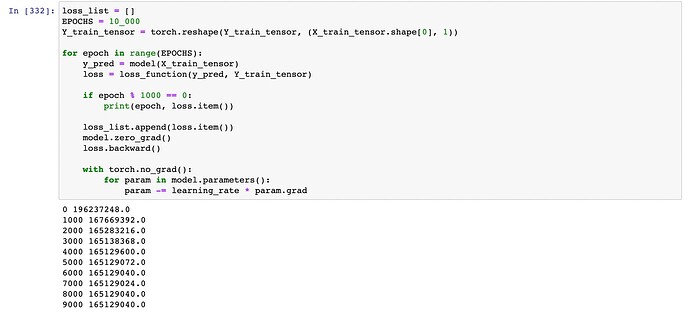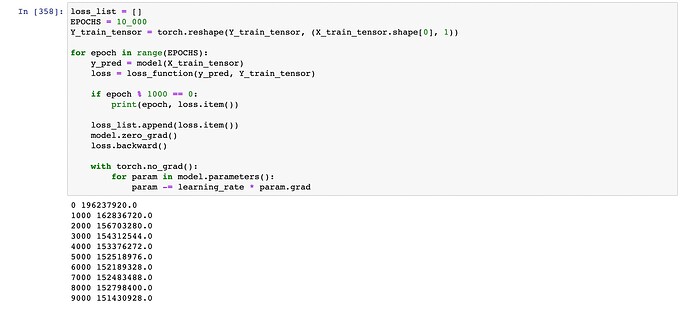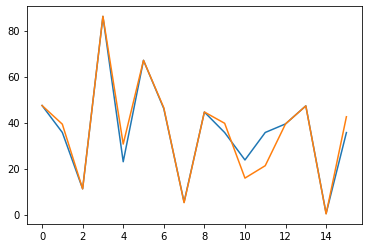Hi everyone!
I’m pretty new to Machine Learning and I was trying to implement Linear Regression to predict house prices.
The issue that I’m facing is that during training, my loss function does not decrease or it decreases just a bit. It’s stuck on value 165283216.0 which is not satisfying at all…
Here’s the code:
# house_features is pandas dataframe with columns: 'district', 'rooms', 'square_meters'
# house_prices is a dataframe with just one column: 'price'
X_train, x_test, Y_train, y_test = train_test_split(house_features, house_prices, test_size=0.2, random_state=42)
# Here I'm converting data to tensors
dtype = torch.float
X_train_tensor = torch.tensor(X_train.values, dtype=dtype)
x_test_tensor = torch.tensor(x_test.values, dtype=dtype)
Y_train_tensor = torch.tensor(Y_train.values, dtype=dtype)
y_test_tensor = torch.tensor(y_test.values, dtype=dtype)
# Configuration values
input_features_amount = 3
output_amount = 1
hidden_layer_size = 10
loss_function = torch.nn.MSELoss()
learning_rate = 1e-4
model = torch.nn.Sequential(torch.nn.Linear(input_features_amount, hidden_layer_size),
torch.nn.Sigmoid(),
torch.nn.Linear(hidden_layer_size, output_amount))
loss_list = []
EPOCHS = 10_000
# Here I'm reshaping tensor so that the shapes would match - I was receiving an error without this line
Y_train_tensor = torch.reshape(Y_train_tensor, (X_train_tensor.shape[0], 1))
for epoch in range(EPOCHS):
y_pred = model(X_train_tensor)
loss = loss_function(y_pred, Y_train_tensor)
if epoch % 1000 == 0:
print(epoch, loss.item())
loss_list.append(loss.item())
model.zero_grad()
loss.backward()
with torch.no_grad():
for param in model.parameters():
param -= learning_rate * param.grad
I attach also a screenshot from Jupyter Notebook with training loss function values. Does anyone know what might be the reason of this issue?
I went through a couple of similar posts but I wasn’t able to implement any reasonable fix.
About dataset, I built it myself by scrapping some page with house rental offers and it consists of ~1000 records.
Thanks in advance!


